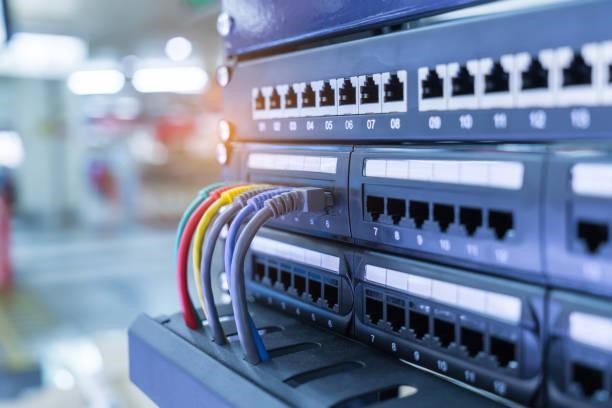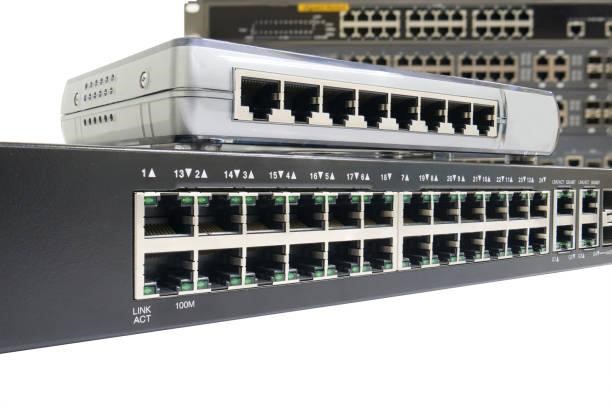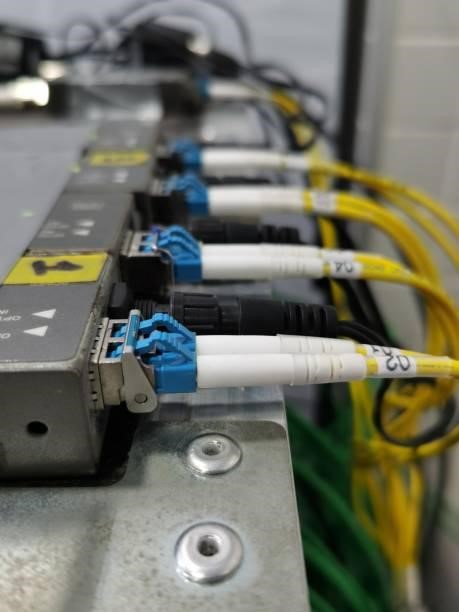Communication has been the channel via which ideas, emotions, information, and tales have been conveyed from the dawn of human history and continues to do so now. The unseen thread connects cultures, creates connections, and propels progress.
A robust and effective communication network infrastructure is critical for running educational institutions, corporations, and organizations in today’s digitally driven world. This is why campus switches are essential in establishing and maintaining this infrastructure.
Exploring the world of campus switches may improve your grasp of current networking solutions, whether you’re an IT professional, a student, or someone interested in networking technology. Continue reading this article to find out how to elevate your network.
Understanding Campus Switches

These campus switches serve as the nerve center of the digital infrastructure. They are available in various sizes and capacities to meet the varying demands of the campus setting. Some switches act as major junctions, managing high data loads in lecture halls or research centers where several devices are accessing internet resources, collaborating on projects, and streaming video simultaneously.
On the other hand, more miniature switches serve as street-level guides, permitting connections in calmer nooks such as individual classrooms or faculty offices.
If you are, for instance, looking for a hierarchy that enables effective data management and reduces network congestion, Campus Switches are your go-to choice. Several organizations, including Larch Networks, offer the services that will help you achieve such an infrastructure.
The ability of these switches to effectively regulate traffic is a crucial feature. They can determine the source and destination of data packets and make judgments depending on parameters like priority and security settings.

For example, a live video conference between medical students and a faraway expert may be given higher importance than a student going through social media. This Quality of Service (QoS) mechanism guarantees that critical applications receive the bandwidth they demand while maintaining a high level of service overall.
Why Campus Switches Matter?

You might be wondering why campus switches are significant in the larger networking context. The solution can be found in their capacity to offer devices within a specific geographic region high-speed, low-latency connections. Switches intelligently guide data exclusively to the appropriate receiver instead of typical hubs, which broadcast data to all connected devices. This dramatically lessens network congestion and improves performance as a whole.
Campus switches make it possible to partition the network and set up virtual LANs (VLANs), which enhance security and management. For instance, the IT staff may streamline network administration by dividing academic departments into several VLANs, protecting essential research data from illegal access.
Transitions on campus also have a significant influence on how users are treated. In a dynamic learning environment like a university campus, where several activities occur simultaneously, continuous and seamless connectivity is critical. These switches are essential for the seamless operation of critical systems administered by administrative staff, researchers working on live projects, and students attending virtual lectures.
Consider the following scenario: a student is taking an online exam requiring a consistent internet connection. The capacity of a campus switch to quickly manage data traffic guarantees that student replies are transferred without delay, minimizing any possible disturbance that might damage test results.
Similarly, lecturers doing remote seminars rely on these switches to deliver real-time instruction to a dispersed audience, generating a feeling of involvement and interaction regardless of physical location.
Elevating Your Network with Campus Switches
Campus switches play an important role in effective network administration in today’s world of digital connectivity, where the continuous transmission of information fosters productivity and cooperation. Below are a few beneficial aspects of campus switches.
1. Performance Boost
The installation of campus switches significantly improves the performance of your network. You’ll notice quicker data transmission rates with fewer delays, ensuring that your online activities, such as streaming lectures or working on assignments, are smooth and efficient.
2. Reliability
Campus switches improve network resilience by minimizing data collisions and congestion. They actively monitor and control data flow to ensure your network stays reliable even during peak usage periods.
3. Scalability
Your network expands in line with your institution or organization. Campus switches are intended to be scalable. They can easily accept additional devices and users while maintaining performance.
4. Security
In every network environment, security is critical. With their VLAN features, campus switches enable you to segregate and encrypt necessary data, limiting unwanted access and possible breaches. This feature is essential in educational environments where student and research data must be protected.
5. Simplified Management
Campus switches frequently provide simple administration interfaces that make configuring, monitoring, and troubleshooting network issues easy. This ease of control enables IT teams to handle network maintenance and optimizations more efficiently.
Choosing the Right Campus Switch
The ideal campus switch is determined by a variety of criteria, including the size of your firm, network demands, and budget. Consider the following crucial points:
1. Port Density
Determine the number of devices that must be linked. A greater port density switch is appropriate for bigger enterprises, whilst smaller firms may prefer switches with fewer ports.
2. Speed and Bandwidth

Select switches that can handle your network’s needed speed and bandwidth. For data-intensive processes, Gigabit Ethernet and even 10 Gigabit Ethernet switches may be required.
3. PoE (Power over Ethernet)
Consider PoE switches if you want to install devices such as IP cameras, Wi-Fi access points, or VoIP phones. These switches transmit data and power over the same Ethernet wire, minimizing clutter and making installation easier.
4. Redundancy
Redundancy is essential for mission-critical networks. To ensure continuous functioning, look for switches that include capabilities such as link aggregation and hot-swappable components.
Conclusion
Understanding and leveraging the characteristics of campus switches may significantly enhance your network’s performance, stability, security, and scalability.
Whether you’re an experienced IT professional or simply interested in networking, the role of campus switches in designing current network infrastructures cannot be overstated.

The Search Engine Cage team is on a mission to educate entrepreneurs. We make things easier for the small business owner, by writing articles that help them to understand SEO and Digital Marketing.







